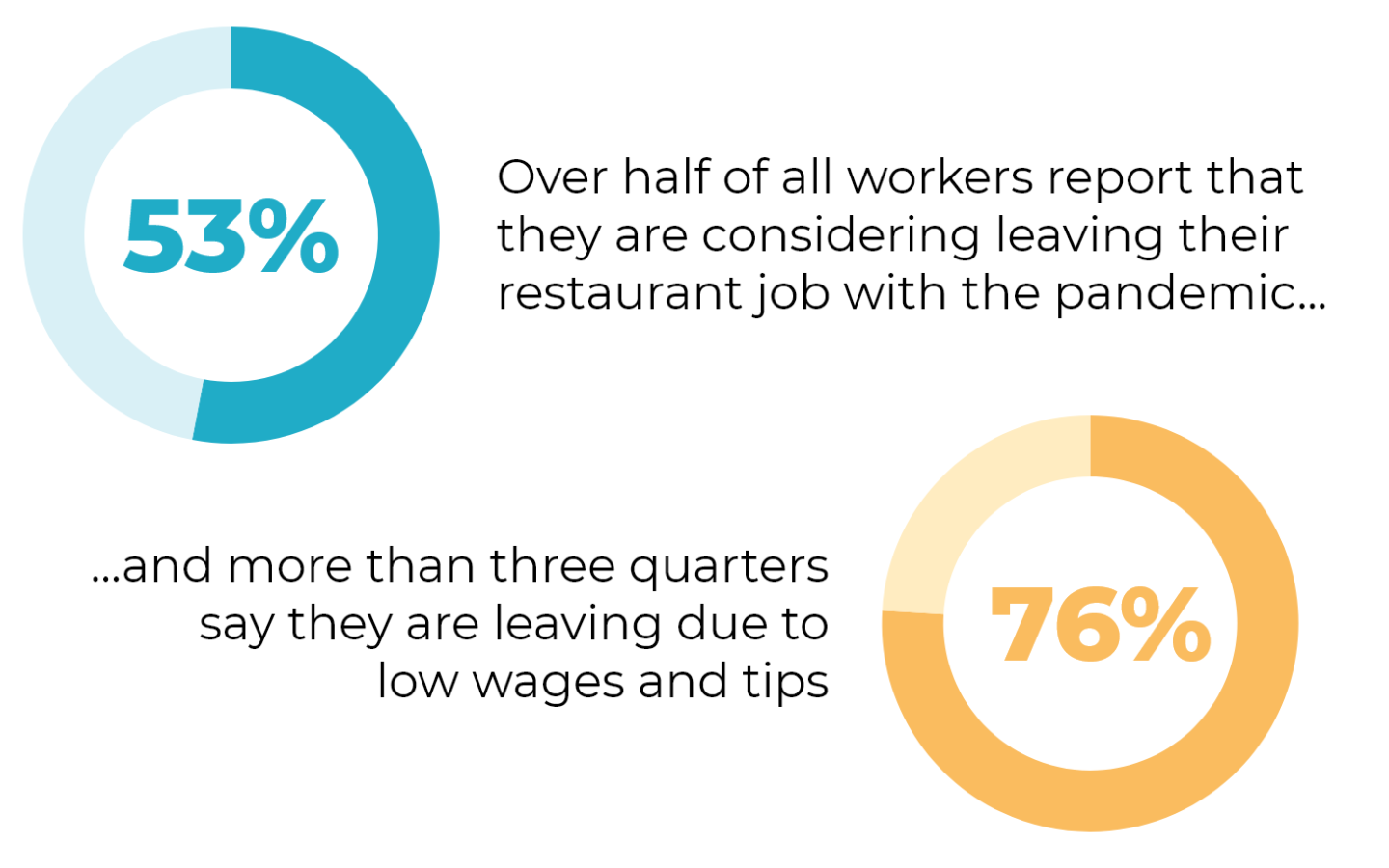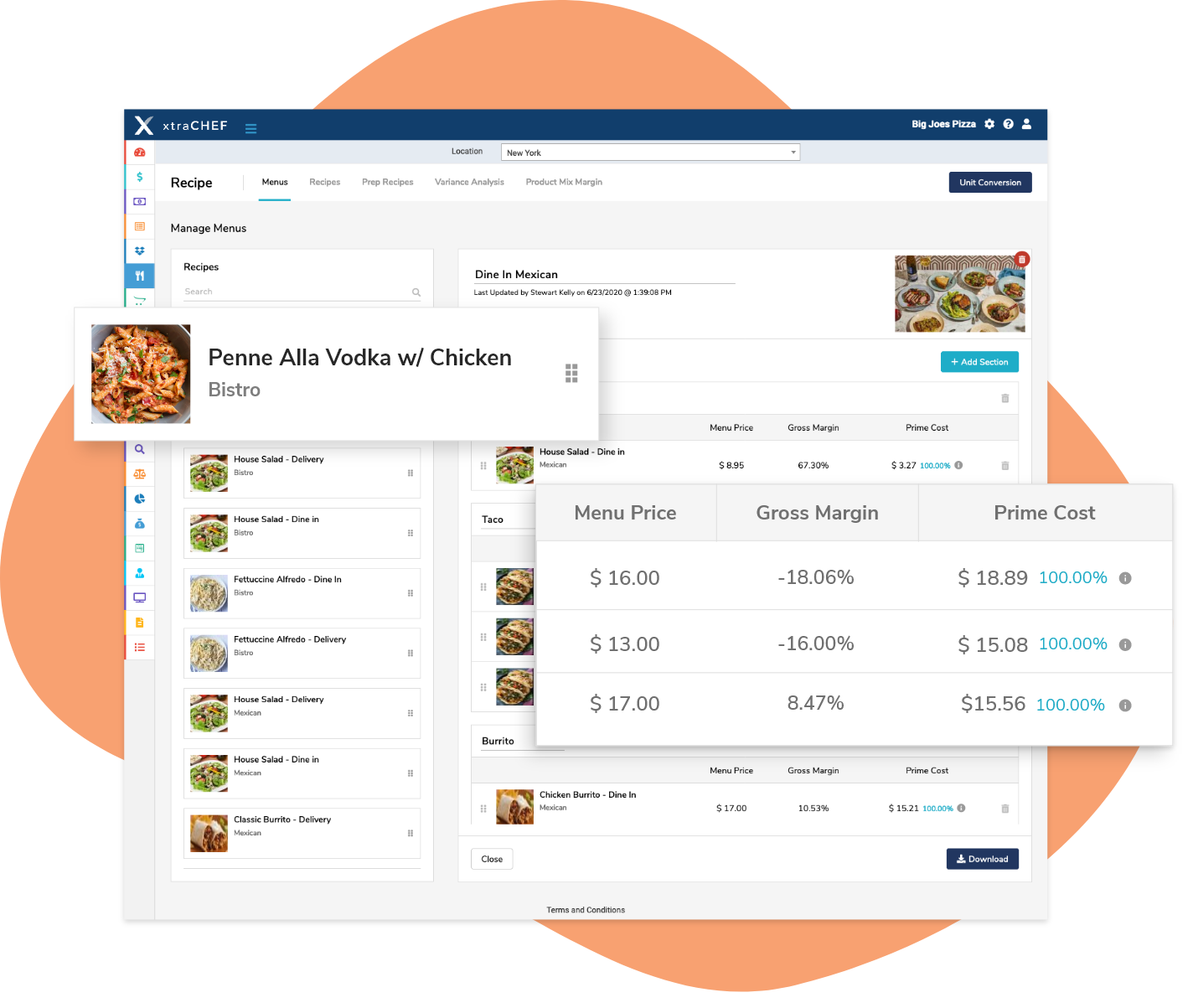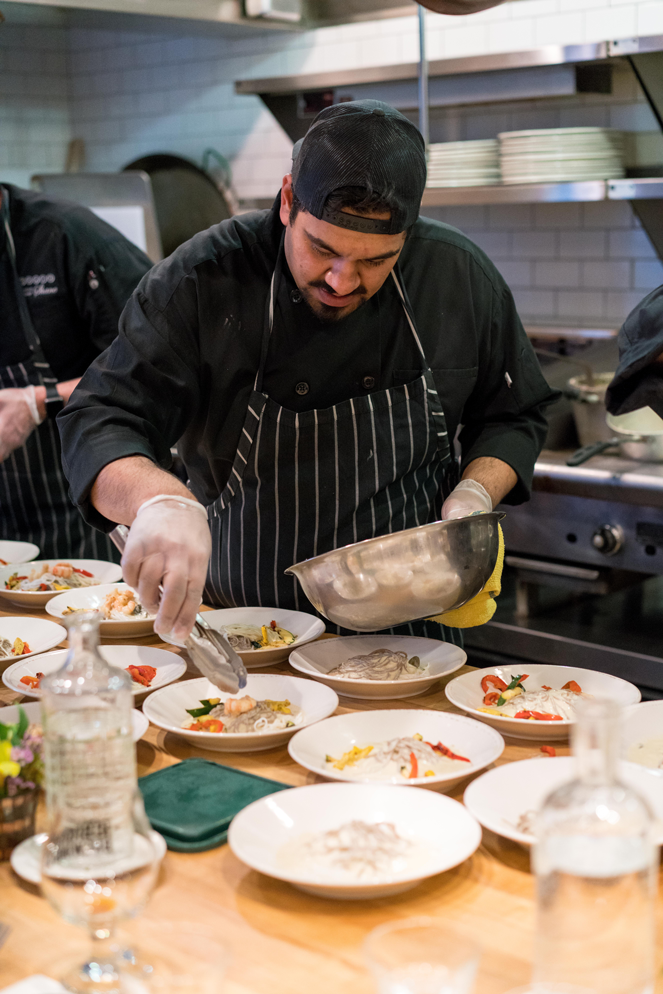Alleviate Rising Restaurant Labor Costs with Key Automations
Restaurants are struggling to scale their staff as restrictions lift and cities reopen. But you know this – you probably have the rising labor cost receipts to prove it.
If you don’t, you likely will soon.
Research shows that low, unreliable wages and tips are driving food service workers out of the industry:

Seems like increased restaurant labor costs are inevitable and here to stay, especially for top talent in hot cities. So how are you going to free up additional capital for rising labor costs?
If you’re like most restaurant businesses, you can boil out some margin through operational automations. And you can always gain an edge on food costs by being more dynamic in your recipe and inventory management.
Continue reading to learn how to carve out some much-needed space to accommodate your increasing restaurant labor costs.
Implement valuable restaurant automations to unlock time and resources
It’s time to automate tedious manual processes.
Automating your AP process will free up literal hours of labor each week that you can put to use somewhere else or simply cash in on for additional hires. AP automation allows you to eliminate or reassign bookkeepers (or whoever is manually handling your invoices) freeing up much-needed payroll during this period of increasing labor costs.
Restaurant AP automation solutions digitize paper invoices, automatically applying general ledger codes and reconciling periodic vendor statements. Simple integrations allow your accounting data to automatically flow into accounting systems so that your books are always up to date when planning new hires or applying for much-needed restaurant relief.
Additionally, with automatic invoice digitization, you’re able to mitigate all that human error mucking up your inventory counts and recipe costs. And they help you achieve data-driven insights that can exponentially improve your business.
Capitalize on precise data to free up capital
Automations, and the reliable operational and financial data they provide, are essential for achieving growth goals and navigating day-to-day decisions. Insights gleaned from accurate data help you answer questions that might mitigate rising labor costs, such as:
- How are your food costs changing over time?
- Does continuing wing Wednesdays make sense given skyrocketing chicken costs?
- Could you operate with 50% less inventory on hand?
Each of these is a potentially money-saving question. And having accurate food costs and reliable inventory and recipe tools will provide the answer.
Manage Food Costs
Food cost management is an especially tricky beast these days. We’re still dealing with constant supply chain interruptions that lead to wild price fluctuations (only upward, of course.) It’s hard out there for you to get a consistent handle on what it takes to make your products, but you must.
A tool to track food costs over time and between locations is a must to help you mitigate rising labor costs. Food cost management software can help you catch price fluctuations – and respond accordingly – at the click of a button. Every dollar you save in food costs is a dollar that can go to covering labor costs.
Know the Cost of Your Recipes
Tracking and reducing the cost of your menu items is a great way to cover labor increases. There are potential adjustments as simple as going from the best Dijon mustard to the second-best, slightly cheaper Dijon mustard. If differences in quality and taste are negligible for the consumer, you no longer have the liberty to keep getting the best simply because “you can tell the difference.”
Use a recipe management tool to track recipe costs and see how swapping ingredients can affect your margins.
Understand What You Have on Hand
Lean inventory is an increasingly popular data-driven optimization sweeping across restaurants. It’s precisely how you need to think about using data to free up capital that can be reinvested in labor costs.
If you need 10 jars of olives a week, don’t consistently keep 20+ jars stocked. Seems obvious enough, and the money freed from an extra 10 jars of olives won’t get you all the way to a new employee. But over time, with all your inventory and across all your locations, a lean inventory can actually put some more points back in your margin for labor costs or whatever else the business needs.
An inventory management solution can help you know what you have on hand to make sure you’re not overordering or letting food (and capital) go to waste.

Restaurant labor shortage can’t keep you from this growing momentum
Despite rising labor costs, it’s shaping up to be a lovely and profitable spring for restaurants. Restrictions easing and cities opening back up. Consumers starving to get back into their favorite restaurants and try new ones too. There’s very real momentum that you can tap into for reopening and growing your operation.
You have to capitalize on this momentum. There’s room in your margins to find space to keep or go poach that chef you need, you just need the right tools to find it.
Let this period of increased restaurant labor costs be your catalyst to adopt and optimize automated systems across your business. Pair these tools with your newfound talent and the summer’s momentum, and that may be exactly what you need to slingshot your operation into the fall, 2022, and beyond.

Let xtraCHEF do your dirty work.
See how our platform sets restaurants of all sizes and service levels up for success by scheduling a demo with a Product Specialist.


